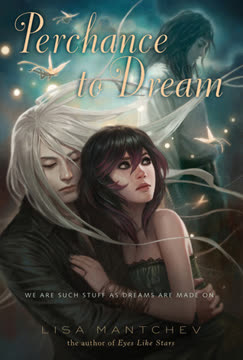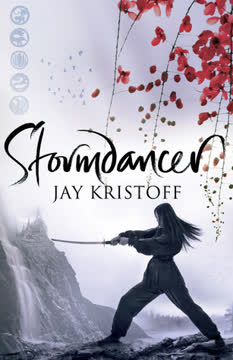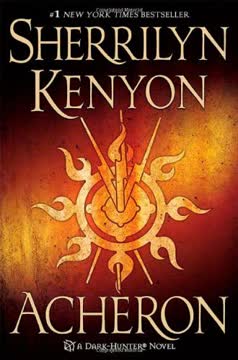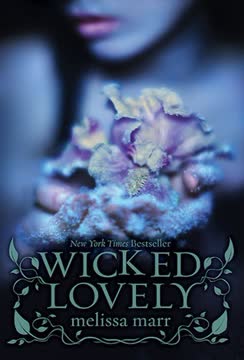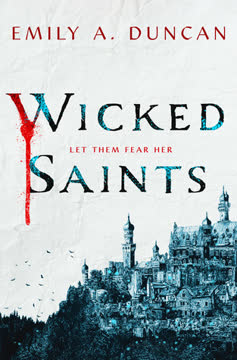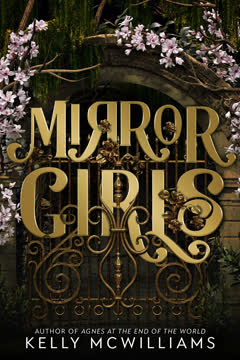Plot Summary
Pie, Prologues, and Promises
Bertie Shakespeare Smith, a girl raised in the magical Théâtre Illuminata, sets out on a quest to rescue her beloved pirate Nate from the Sea Goddess Sedna. With her are the mischievous fairies, the enigmatic air spirit Ariel, and a page torn from the magical Book that once defined her world. The group's banter is laced with longing and uncertainty, especially as Bertie's heart is torn between Nate and Ariel. The journey is both literal and emotional, as Bertie must learn to wield her new power as Mistress of Revels—one who can write reality. The road ahead is uncertain, but Bertie's resolve is clear: she will reclaim Nate, discover her father's identity, and write her own story, even as the boundaries between stage and life blur.
Ghosts, Wolves, and Writing Magic
Bertie's first attempt to write Nate back from Sedna's clutches goes awry, summoning only his ghostly shade. The group is beset by wolves, and Bertie's magic, still raw and unpredictable, nearly sets her friends ablaze. The arrival of Waschbär, a sneak-thief with a code of honor, brings both danger and opportunity. He offers Bertie a magical journal in exchange for a "stolen" dream, challenging her to define what she truly wants. The night is fraught with peril, but Bertie's determination to master her power and save Nate only grows, even as the cost of magic—and the risk of unintended consequences—becomes painfully clear.
The Sneak-Thief's Bargain
Waschbär, the sneak-thief, becomes both ally and test for Bertie. He offers her a glowing journal, but only if she can "steal" it from him—not with force, but with wit and heart. Bertie's cleverness and willingness to claim her own story win the day, and the journal fuses with her page from the Book, symbolizing her new role as a creator of reality. The group's dynamic shifts as Waschbär joins their ranks, bringing his own brand of wisdom and unpredictability. Yet, the night's revelations—about magic, desire, and the power of words—leave Bertie both empowered and wary of what she might unleash.
Nightmares, Fathers, and Flight
Bertie's sleep is invaded by nightmares and the sudden appearance of the Scrimshander—a bird-man who is revealed to be her long-lost father. Their encounter is fraught with confusion, longing, and the ache of abandonment. The Scrimshander, torn between his bird and human natures, tries to pull Bertie back to safety, but she resists, determined to continue her quest. The revelation that her father was once Sedna's lover, and that her own origins are tangled in myth and heartbreak, deepens Bertie's sense of identity and purpose. The chain that binds father and daughter becomes both a literal and emotional tether, pulling Bertie toward her destiny.
Chasing Chains and Choices
The magical chain linking Bertie to her father drags her across the countryside, testing her endurance and will. The group races to keep up, their journey marked by hunger, exhaustion, and the ever-present threat of losing each other. Bertie's magic conjures both solutions and chaos, from conjured food that appears in the wrong place to storms that threaten their progress. The tension between Bertie's longing for family and her need for independence comes to a head as she is pulled skyward by her father, only to break free through sheer determination and the power of her written word. The cost of freedom is steep, but Bertie's resolve is unbroken.
Village Debts and Revels
The group's arrival in a village leads to chaos as the fairies wreak havoc on a wedding feast. To repay their debt, Bertie and her companions must perform for the villagers, blending magic, theater, and improvisation. Bertie steps into the role of Mistress of Revels, donning her mother's costume and embracing her power as a storyteller. Yet, even as she dazzles the crowd, she is snatched away by her father, who mistakes her for Ophelia. The episode underscores the tension between duty and desire, performance and authenticity, as Bertie struggles to define herself amid competing expectations.
Skyward, Storms, and Separation
Carried aloft by her father, Bertie experiences the exhilaration and terror of flight, only to be dropped into a marsh when her true identity is revealed. The fall is both literal and symbolic, marking a turning point in Bertie's journey. Alone and battered, she stumbles upon a vision of the life she might have had—a simple cottage, a loving mother, a family dog—but is rejected by the woman she hoped was her mother. The episode is a painful reminder that some doors cannot be reopened, and that the past, however alluring, cannot be reclaimed. Bertie's journey becomes one of survival, resilience, and the search for belonging.
Lost and Found in the Rain
Exhausted and wounded, Bertie is found by Waschbär and reunited with her companions. The group's relief is tempered by the realization that their journey is far from over, and that the path ahead leads into treacherous mountains and deeper mysteries. Bertie's wounds—both physical and emotional—are tended by her friends, but the scars of loss and longing remain. The magical map she conjures charts their course, but the true direction of her heart remains uncertain. As the caravan climbs into the mountains, Bertie is haunted by dreams of Nate, Ariel, and the choices that will define her fate.
The Caravanserai's Crossing
A blizzard strands the group, forcing them to seek refuge with the Innamorati, a traveling circus troupe. Bertie trades her storytelling for passage, and the group is swept into a world of costumes, pies, and performances. The boundaries between reality and theater blur as Bertie crafts a new play, drawing on her own journey and the mythic struggle between sun and moon. The camaraderie of the troupe offers comfort, but also new challenges, as Bertie's relationships with Ariel and Nate grow more complicated. The journey becomes a spectacle in itself, a dance of masks and truths.
Costumes, Pies, and Plays
Amid the circus's riotous energy, Bertie undergoes a series of costume changes—literal and metaphorical—that force her to confront her own identity. The Keeper of the Costumes warns her of the dangers of careless magic, while the pie car becomes a site of both indulgence and revelation. Bertie's play takes shape, mirroring her own struggles with love, loyalty, and the desire for agency. The lines between performer and audience, writer and character, blur as Bertie realizes that the story she tells may determine not only her fate, but the fate of those she loves.
The Wheels of Fate
Bertie and Ariel are thrust into a magical performance that becomes a test of trust, courage, and love. Spinning atop the Wheels of Death, they must rely on each other to survive, even as the script—written by Bertie's own hand—threatens to trap them in an endless cycle of longing and loss. The journey through the play's set pieces becomes a journey through Bertie's own heart, as she confronts the dangers of her own magic and the consequences of her choices. The performance is both a triumph and a trial, leaving Bertie changed and uncertain of what comes next.
Blood, Bone, and Vows
The journey leads Bertie and Ariel into Sedna's realm, where they are forced into a magical wedding ceremony. Bound by blood and bone, Bertie is caught between her love for Nate and her bond with Ariel. The ceremony is both a trap and a revelation, exposing the tangled web of promises, desires, and sacrifices that define her relationships. The power of blood-magic and bone-magic is unleashed, and Bertie must confront the reality that love, in all its forms, demands both courage and surrender. The vows spoken and unspoken will shape the outcome of the final confrontation.
Sedna's Kingdom Below
Bertie, Ariel, and Nate descend into Sedna's underwater kingdom, where the Sea Goddess forces them into a deadly game. Bertie's love for both men is tested as Sedna demands a choice: only one may return to the surface with her. The ensuing duel between Ariel and Nate is both brutal and heartbreaking, fueled by Sedna's malice and the wounds of jealousy. Bertie's refusal to choose, and her willingness to sacrifice herself, breaks the spell and banishes both men to safety. Alone with Sedna, Bertie faces the ultimate test of her power and her heart.
Duel of Hearts
The duel between Ariel and Nate, manipulated by Sedna's magic, brings Bertie to the brink of despair. Her intervention—threatening her own life—halts the violence, but Sedna's wrath is unrelenting. As the cavern floods, Bertie uses the last of her magic to save the men she loves, encasing them in stone and sending them to safety. The act is both a triumph and a surrender, as Bertie is left alone to face Sedna's vengeance. The cost of love, and the price of agency, are laid bare in the darkness of the Sea Goddess's lair.
Drowning, Dreaming, Surviving
Trapped and drowning, Bertie confronts Sedna in a final battle of wills. The Sea Goddess seeks to claim her, but Bertie draws on the strength of her heritage—Ophelia's resilience, the Scrimshander's artistry, and her own indomitable spirit. The earth itself aids her escape, guiding her through darkness and memory to the surface. Bertie's survival is an act of defiance, a refusal to be defined by the expectations or desires of others. Emerging from the depths, she is transformed—wounded, wiser, and more fully herself.
The Tangled Chain Unwound
Bertie returns to the shore, battered but alive, and is reunited with her friends and family. The wounds of the journey—physical, emotional, and magical—begin to heal as the group gathers around the fire. The tangled chains of love, loyalty, and destiny are not fully unwound, but Bertie embraces the uncertainty of her future. The journal, now recording her story in its own hand, is both a reminder of the power of words and a symbol of the ongoing journey. As the curtain falls, Bertie chooses to remain with her found family, ready to write the next act of her life.
Characters
Beatrice "Bertie" Shakespeare Smith
Bertie is a seventeen-year-old girl raised within the magical confines of the Théâtre Illuminata, a place where every play ever written is performed and reality is shaped by the written word. Her journey is one of self-discovery, as she grapples with her newfound power as Mistress of Revels—the ability to write reality—and the tangled loyalties of her heart. Torn between her love for the steadfast pirate Nate and the alluring, mercurial Ariel, Bertie's struggle is both internal and external. Her relationships with her parents—Ophelia, the ever-drowned, and the Scrimshander, a bird-man torn by his own past—mirror her own search for identity and belonging. Bertie's arc is defined by her refusal to be a passive character in anyone else's story; she claims her agency, even as the cost of magic and love threatens to consume her. Her greatest strength is her resilience and her willingness to embrace both the pain and the beauty of her own story.
Ariel
Ariel, drawn from Shakespeare's The Tempest, is an elemental being of wind and longing. His relationship with Bertie is fraught with desire, jealousy, and the ache of unfulfilled love. Ariel is both protector and tempter, offering Bertie the promise of freedom and the danger of losing herself in the winds of passion. His rivalry with Nate is both a literal and symbolic duel for Bertie's heart, and his own journey is one of learning the limits of power and the necessity of letting go. Ariel's mercurial nature masks a deep vulnerability, and his willingness to sacrifice for Bertie is both his greatest gift and his greatest curse. His arc is one of transformation—from possessive lover to self-aware companion, capable of both rage and tenderness.
Nate
Nate, a pirate from The Little Mermaid, is Bertie's steadfast love and the embodiment of loyalty and sacrifice. Kidnapped by Sedna and torn from his own story, Nate's journey is one of survival, endurance, and the struggle to reclaim his place in Bertie's life. His rivalry with Ariel is marked by both bravado and deep insecurity, as he fears losing Bertie to the winds of change. Nate's strength lies in his groundedness and his willingness to fight for those he loves, even at the cost of his own happiness. His arc is one of acceptance—of his own vulnerability, of Bertie's divided heart, and of the possibility of a future shaped by choice rather than fate.
Waschbär
Waschbär is a raccoon-like thief with a code: he only takes what is unwanted. His role in the story is both comic and profound, serving as a catalyst for Bertie's growth and a reminder of the importance of intention in magic and life. Waschbär's bargains and riddles force Bertie to confront her own desires and the consequences of her actions. His loyalty to the group, despite his wandering nature, is a testament to the power of found family. Waschbär's arc is one of quiet transformation, as he moves from outsider to integral member of the troupe, offering wisdom and support when it is most needed.
The Scrimshander
The Scrimshander, Bertie's long-lost father, is a bird-man torn between his human and avian natures. His past is marked by love, loss, and the inability to reconcile his desires with his responsibilities. His relationship with Bertie is fraught with regret and longing, as he struggles to atone for his absence and to guide her toward her own destiny. The Scrimshander's artistry—carving stories into bone—mirrors Bertie's own power as a writer, and their bond is both a source of strength and a reminder of the pain of separation. His arc is one of acceptance, as he learns to let go and to trust Bertie to write her own story.
Sedna
Sedna is the mythic Sea Goddess who kidnaps Nate and serves as the primary antagonist of Bertie's quest. Her power is both seductive and destructive, offering dreams and demanding sacrifices. Sedna's own story is one of betrayal and heartbreak, and her interactions with Bertie are marked by both cruelty and a twisted empathy. She forces Bertie to confront the limits of love and the dangers of unchecked desire. Sedna's arc is one of dissolution, as her power is ultimately broken by Bertie's refusal to choose and her embrace of her own agency.
Ophelia
Ophelia, drawn from Hamlet, is Bertie's mother and the embodiment of sorrow and resilience. Her story is one of escape—from the theater, from her own past—and of the price of forgetting. Ophelia's relationship with Bertie is marked by absence and longing, and her memory serves as both a guide and a warning. Her arc is one of tragic beauty, as she is both the source of Bertie's power and the reminder of the cost of love and loss.
The Fairies (Peaseblossom, Cobweb, Moth, Mustardseed)
The four fairies are Bertie's constant companions, offering both mischief and wisdom. Their antics provide levity amid the story's darker moments, but they also serve as a chorus, commenting on the action and reflecting Bertie's own doubts and hopes. Each fairy has a distinct personality—Peaseblossom is the voice of reason, Cobweb the skeptic, Moth the dreamer, and Mustardseed the troublemaker. Together, they embody the spirit of the theater: unpredictable, irrepressible, and essential.
Mrs. Edith
Mrs. Edith, the Wardrobe Mistress of the Théâtre Illuminata, is a figure of stability and discipline in Bertie's life. Her stern guidance and unwavering support provide Bertie with the foundation she needs to navigate the chaos of magic and love. Mrs. Edith's presence is felt even in her absence, as her lessons and warnings echo throughout Bertie's journey. She represents the importance of tradition, craft, and the quiet strength of those who work behind the scenes.
Aleksandr
Aleksandr, leader of the Innamorati circus troupe, is a larger-than-life figure who draws Bertie and her companions into a world of spectacle and possibility. His enthusiasm and ambition challenge Bertie to expand her vision and to embrace the power of performance. Aleksandr's role is both mentor and mirror, reflecting Bertie's own potential as a creator and leader. His arc is one of collaboration, as he helps Bertie realize that the greatest stories are those shared with others.
Plot Devices
The Power of the Written Word
The central device of the novel is the magical power of writing—Bertie's ability to alter reality by inscribing it in her journal. This device blurs the boundaries between fiction and life, stage and world, and forces Bertie to confront the consequences of her choices. The unpredictability of magic—its tendency to twist intentions and unleash chaos—serves as both a source of wonder and a warning about the dangers of unchecked power. The act of writing becomes a metaphor for agency, self-definition, and the struggle to claim one's own story.
The Chain of Family and Fate
The motif of chains—linking Bertie to her father, to Nate, to her own destiny—recurs throughout the narrative. These chains represent both the bonds of love and the constraints of expectation. The breaking and reforging of chains mark key turning points in Bertie's journey, symbolizing her struggle to balance loyalty, desire, and independence. The interplay between fate and free will is explored through these connections, as Bertie learns to choose which chains to keep and which to break.
The Theater as Metaphor
The Théâtre Illuminata and the world beyond are both stage and reality, with characters slipping between roles and scripts. The use of performance, costume, and improvisation underscores the fluidity of identity and the power of narrative to shape experience. The novel's structure—divided into acts, scenes, and performances—mirrors Bertie's own journey from passive character to active creator. The theater becomes a space of possibility, danger, and transformation.
Blood, Bone, and Magic
The use of blood-magic and bone-magic—rituals that bind, heal, and transform—reflects the novel's exploration of legacy, sacrifice, and the cost of love. The handfasting, the scrimshaw medallion, and the wounds Bertie bears are all symbols of the ways in which the past shapes the present. The interplay of different magics—earth, air, water, and word—highlights the complexity of power and the necessity of balance.
Foreshadowing and Narrative Structure
The novel employs foreshadowing through dreams, prologues, and the repetition of lines from classic plays. The use of the magical journal as both a record and a tool allows for meta-narrative commentary, as Bertie's story is both written and lived in real time. The structure of the novel—mirroring the acts and scenes of a play—reinforces the themes of performance, agency, and the cyclical nature of stories.
Analysis
Lisa Mantchev's Perchance to Dream is a dazzling meditation on the power of story, the complexity of love, and the struggle for agency in a world where reality is shaped by words. Through Bertie's journey, the novel explores the tension between fate and free will, the allure and danger of magic, and the necessity of claiming one's own narrative. The interplay between theater and life, performance and authenticity, serves as both a celebration of creativity and a cautionary tale about the cost of unchecked desire. The novel's rich tapestry of characters—each drawn from myth, legend, and classic literature—underscores the universality of longing, loss, and the search for belonging. Ultimately, Perchance to Dream invites readers to consider the stories they tell themselves, the roles they choose to play, and the courage required to step beyond the script and write a new ending. The lesson is clear: agency is both a gift and a responsibility, and the greatest magic lies in the willingness to embrace both the pain and the possibility of one's own story.
Last updated:
Review Summary
Perchance to Dream received mixed reviews, with praise for its imaginative writing, character development, and magical atmosphere. Critics appreciated the unique storytelling and literary references. However, some found the plot confusing and pacing inconsistent. The love triangle between Bertie, Nate, and Ariel divided readers. Many enjoyed the comic relief provided by the fairies and the exploration of Bertie's powers. Overall, fans of the first book generally enjoyed this sequel, though some felt it lacked the same spark.
Théâtre Illuminata Series
Similar Books
Download PDF
Download EPUB
.epub digital book format is ideal for reading ebooks on phones, tablets, and e-readers.
